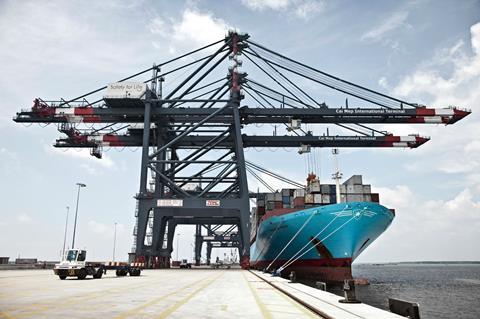Forecasting the trajectory of shipping rates even in the short term is highly problematic. However, Transport Intelligence (Ti) believes it is likely that there will be ‘regression to the mean’ and that there have been no big changes to the industry dynamics that suggest the sky-high rates will be the new normal.

In its whitepaper, Ocean Freight Rate Tracker Q4 2021, Ti sets out some of the key issues that are presently having an impact on the operational capabilities of the shipping and logistics industry; the service levels that carriers and logistics operators are able to provide; and the rates that they charge.
The interaction between capacity within the industry and volumes of containers being shipped has had a profound impact on freight rates, resulting in high prices and enormous profits for shipping lines.
“Since the beginning of the Covid-19 crisis, production has been disrupted by a variety of different factors. Government lockdowns led to the suspension or reduction of production at many manufacturing locations across Asia. Although China was badly affected at the outset, disruption has been ongoing across the region over the past 18 months including in Vietnam where a large proportion of factories are only recently coming back online,” said Ti.
“Less well known has been the difficulty which many emerging market exporters have faced in accessing trade finance, critical to the functioning of many global supply chains. The International Chamber of Commerce has estimated that an additional USD1.9 to USD5 trillion is needed to return to 2019 trade finance supply levels.
“This challenging manufacturing environment has been exacerbated by ‘lumpy’ demand from Western customers, struggling to understand their own markets. This has resulted in a stop-start pattern to both orders and fulfilment, wreaking havoc with inventory management and, most egregiously, with the capacity planning of shipping lines,” it explained.
Part of the problem for the industry is that freight volumes have not just been consistently high, but highly volatile – what’s called the bullwhip effect. That is, even small adjustments to consumer behaviour downstream result in the distortion of orders throughout the supply chain.
Ti added: “The stimulus packages provided by the Biden administration (as well as in most countries around the world) have led to retailers and wholesalers placing orders with Asian manufacturers, which could be many times than required by the market. Eventually, some analysts believe that the market could be awash with product – driving down prices in a welcome relief for inflationary pressures. The jury is out on this unexpected consequence.”
Beyond these one-off stimulus packages, Ti said that have been no big changes to the industry dynamics that would suggest that elevated rates will be the new normal. In fact, given the orderbook for new ships and the chances that this new capacity will be launched onto the market in the middle of a 2023 downturn, shipping lines could face a challenging period: the usual bust after a shipping boom.
“The return to this norm will be delayed by restocking of inventories by North American and European manufacturers and retailers. These are presently at historic lows and their replenishment will act as a ‘parachute’ for rates into Q2 2022. Other positive demand-side forces include consumer spending, which will hold out until savings have been drawn down and credit limited by interest rate rises.
“Complicating this outlook is the inability of suppliers to meet this demand. The situation in China is unpredictable with manufacturers having to cut output due to the energy shortage and a zero-tolerance approach to Covid-19 leading to suspension of production in factories and services at ports and airports. This may mean that consumer and business demand in the West goes unmet in the short term and some economic value is lost for good. On the other hand, this may be a good thing, flattening demand, cooling markets and allowing ports and shipping lines to deal with backlogs. Offset demand would also cushion falling shipping rates further into 2022, meaning that it will be 2023 before historic norms are reached,” Ti concluded.
















